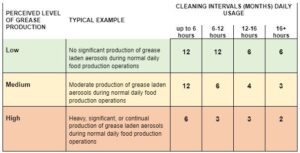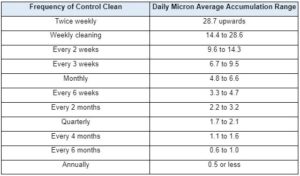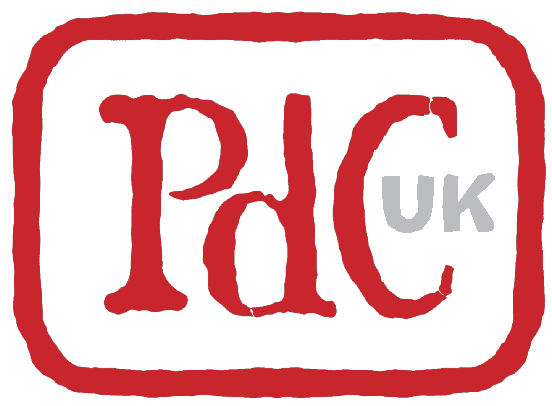Did you know that 70% of fires in commercial kitchens are traced back to faulty extract ventilation systems? It’s a staggering statistic, but not entirely surprising when you consider the dangerous cocktail of grease, carbon, and steam that can accumulate in kitchen ducts during cooking.
“Ticking Time Bomb”
Picture this: as you whip up your culinary creations, airborne greases and steam invisibly coat the inner walls of your ventilation ducts. Over time, these residues form stubborn fat deposits, choking airflow and creating a breeding ground for foul odours. But here’s the kicker—this buildup isn’t just a nuisance. It’s a ticking time bomb.
Unchecked grease accumulation turns your ventilation system into a fire hazard waiting to ignite. A single spark is all it takes to transform a clogged duct into a raging inferno, capable of devastating your entire establishment in minutes.
Preventing Disaster
That’s where TR19 compliance comes in. By adhering to these standards for regular duct maintenance, businesses can significantly reduce the risk of fire-related disasters. Not only does proper maintenance ensure clear airflow and minimise foul odours, but it also protects against the catastrophic physical and financial losses that accompany building fires.
Consequences of Non-Compliance with TR19 Guidelines:
- Increased Fire Risk: Ignoring TR19 guidelines can lead to the build-up of grease and other flammable substances in extract systems, significantly heightening the risk of a kitchen fire.
- Health and Safety Violations: Non-compliance can result in health and safety breaches, which might lead to legal action, fines, and in severe cases, closure of the kitchen.
- Poor Hygiene and Contamination: Failure to clean extract systems regularly can lead to bacterial growth and contamination, posing health risks to both staff and customers.
- Insurance Issues: Many insurance policies require adherence to TR19 standards. Non-compliance can lead to insurance claims being denied in the event of a fire or other related incidents.
- Equipment Damage: Neglecting regular maintenance and cleaning can lead to premature wear and tear of the ventilation system, resulting in unexpected breakdowns and costly repairs.
- Damaged Reputation: A kitchen that does not comply with TR19 may suffer a damaged reputation, especially if it becomes known for hygiene issues or safety violations. This can lead to a loss of customers and revenue.
Why Certified Professionals Are Essential:
- Expertise: Certified professionals possess the training and expertise required to execute the cleaning process effectively and safely.
- Compliance: They ensure that cleaning is conducted in full compliance with TR19 standards, essential for legal and insurance purposes.
- Safety: Professional cleaners are adept at handling chemicals and equipment safely, minimising the risk of accidents.
- Thoroughness: Equipped with the right skills and tools, they can thoroughly clean even the most hard-to-reach parts of the extract system.
- Documentation: Certified professionals provide comprehensive documentation of the cleaning process, crucial for demonstrating adherence to TR19 standards.
The Common Challenges with Duct Cleaning:
- Accessibility Challenges: Navigating through intricate or aged systems to reach all parts of the extract system can be demanding.
- Grease Buildup: Tackling stubborn grease accumulation demands specialised cleaning methods and products.
- Time Restraints: Balancing thorough cleaning with the demands of a bustling kitchen environment can be a juggling act.
- Safety Priorities: Ensuring the well-being of cleaners and kitchen staff, especially in tight quarters or when handling potent chemicals, is paramount.
- Risk of Maintenance Mishaps: There’s always a looming possibility of unintentional damage to the ventilation system during cleaning if proper precautions aren’t observed.
By acknowledging and effectively addressing these obstacles, commercial kitchens can ensure their extract systems receive the meticulous cleaning needed to maintain a safe and compliant space.
Maintaining TR19 Standards: The Essentials
Regular Maintenance Schedules:
- Adhering to a consistent maintenance schedule is paramount within TR19 guidelines.
- The frequency of cleaning should reflect the kitchen’s activity level and cooking style, which impact grease buildup.
- Detailed schedules ensure comprehensive cleaning of all system components, enhancing compliance and prolonging equipment lifespan.
Importance of Record-Keeping:
- Thorough documentation of cleaning and maintenance activities is imperative for TR19 compliance.
- Records should encompass cleaning dates, areas addressed, methods utilised, and any repairs undertaken.
- These records serve as crucial evidence of compliance during insurance claims and legal inquiries, and aid in future maintenance planning.
Audits and Inspections:
- Regular audits, often conducted by certified professionals, are essential for TR19 adherence.
- These assessments evaluate system cleanliness and condition against TR19 standards, identifying areas for improvement.
- Inspections also validate the efficacy of current cleaning protocols and offer opportunities to update documentation, reinforcing a commitment to safety and compliance.
Cleaning Intervals Based on Use:
TR19 recommends cleaning intervals based on kitchen usage:
- Heavy use: Every 3 months.
- Moderate use: Every 6 months.
- Light use: Every 12 months.
Table 4 will assist in establishing the initial cleaning frequency for the system in the absence of data on the historical pre-clean grease thickness levels and duration of days between each set of grease thickness readings.

The canopy and extract plenum are areas with a high risk of fire. Consideration should be given to more frequent cleaning in accordance with insurers’ requirements.
In addition to the scheduled specialist cleaning, a daily or weekly cleaning regime should be implemented on canopies, separators and associated drain and traps in accordance with manufacturers’ recommendations.
Typically, these are carried out by the kitchen operator to comply with the property insurers’ requirements.
To quickly assist in selection of the correct cleaning intervals Table 5 assesses the required cleaning intervals against average grease accumulation that has built up over several days.

Notes to Table 5:
The frequency guidance table requires a simple calculation to define the daily rate of accumulation in microns.
To calculate daily rate, take mean pre-clean system micron levels and divide by number of days since previous clean or opening of site and grease production.
Select appropriate range to define the frequency of the risk control clean required to ensure micron levels do not exceed 200 as a mean between each cleaning visit.
It should be noted that cleaning frequencies shown in Table 5 are indicative only and are based on historic usage of the system. They should not be seen as substitutes to an actual cleanliness risk assessment undertaken by a competent person. When calculating the cleaning frequency seasonal variations and changes in the type and frequency of cooking should be taken into consideration. An additional risk assessment may be required as a result.
Text cited from BESA TR-19.
